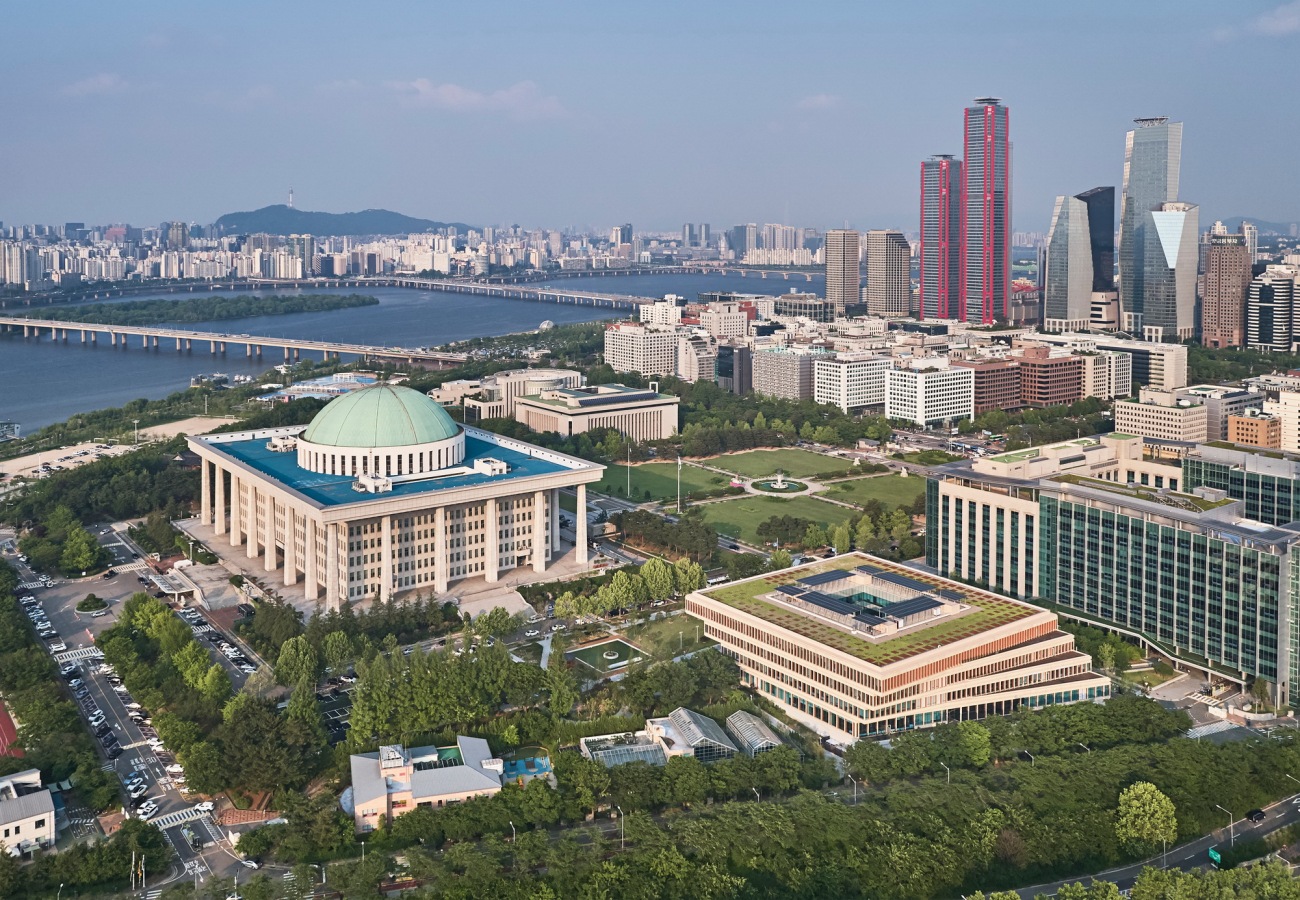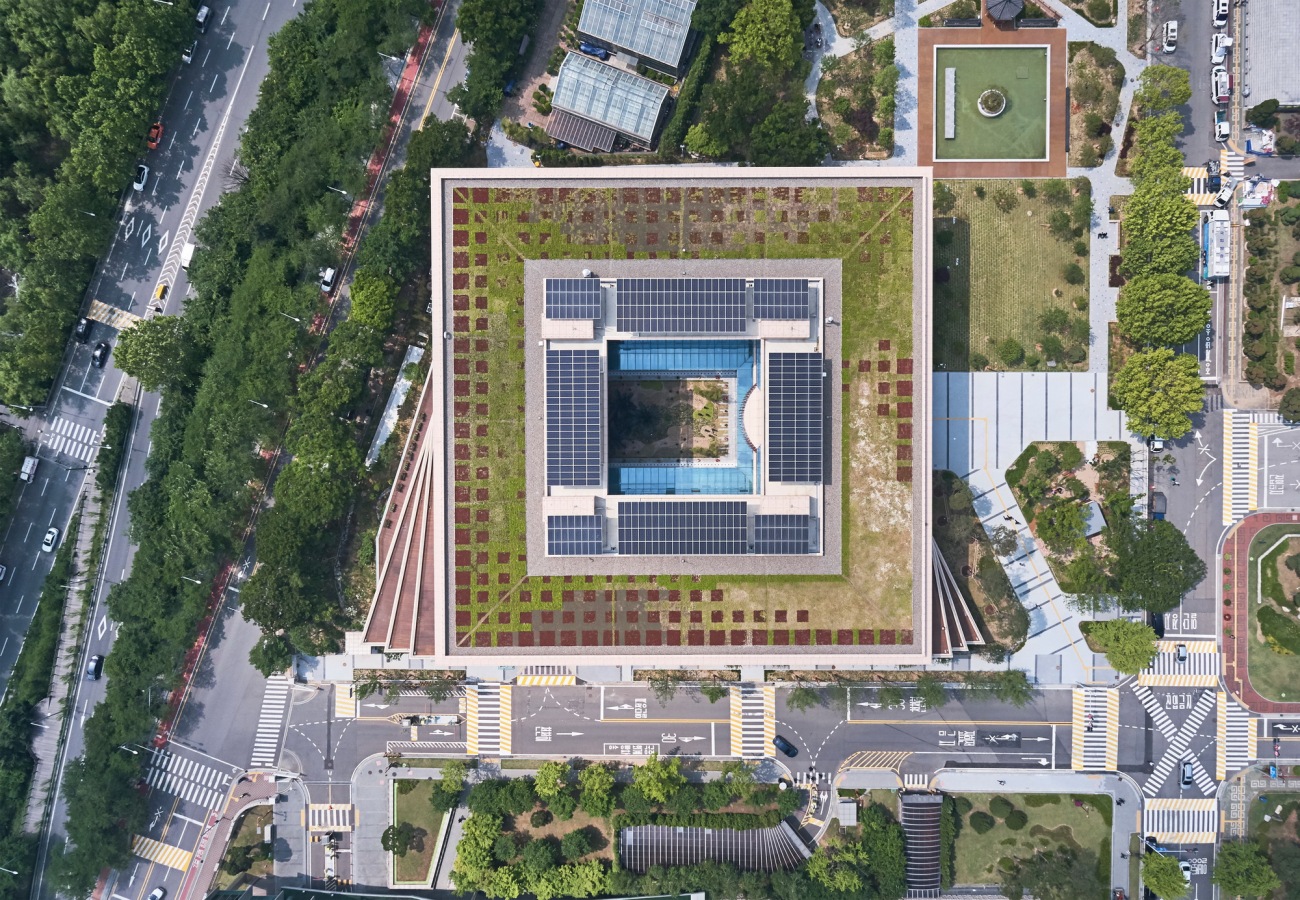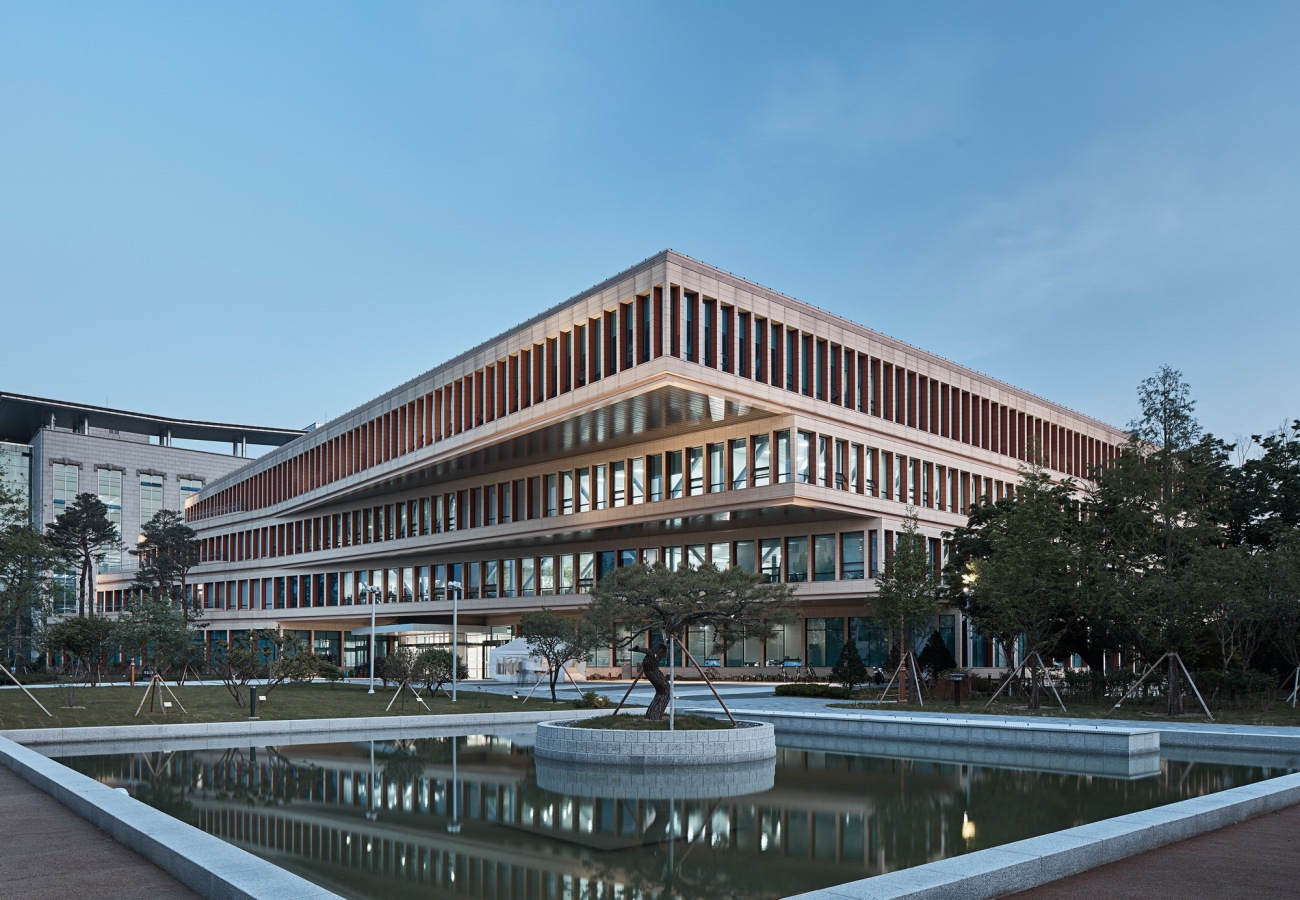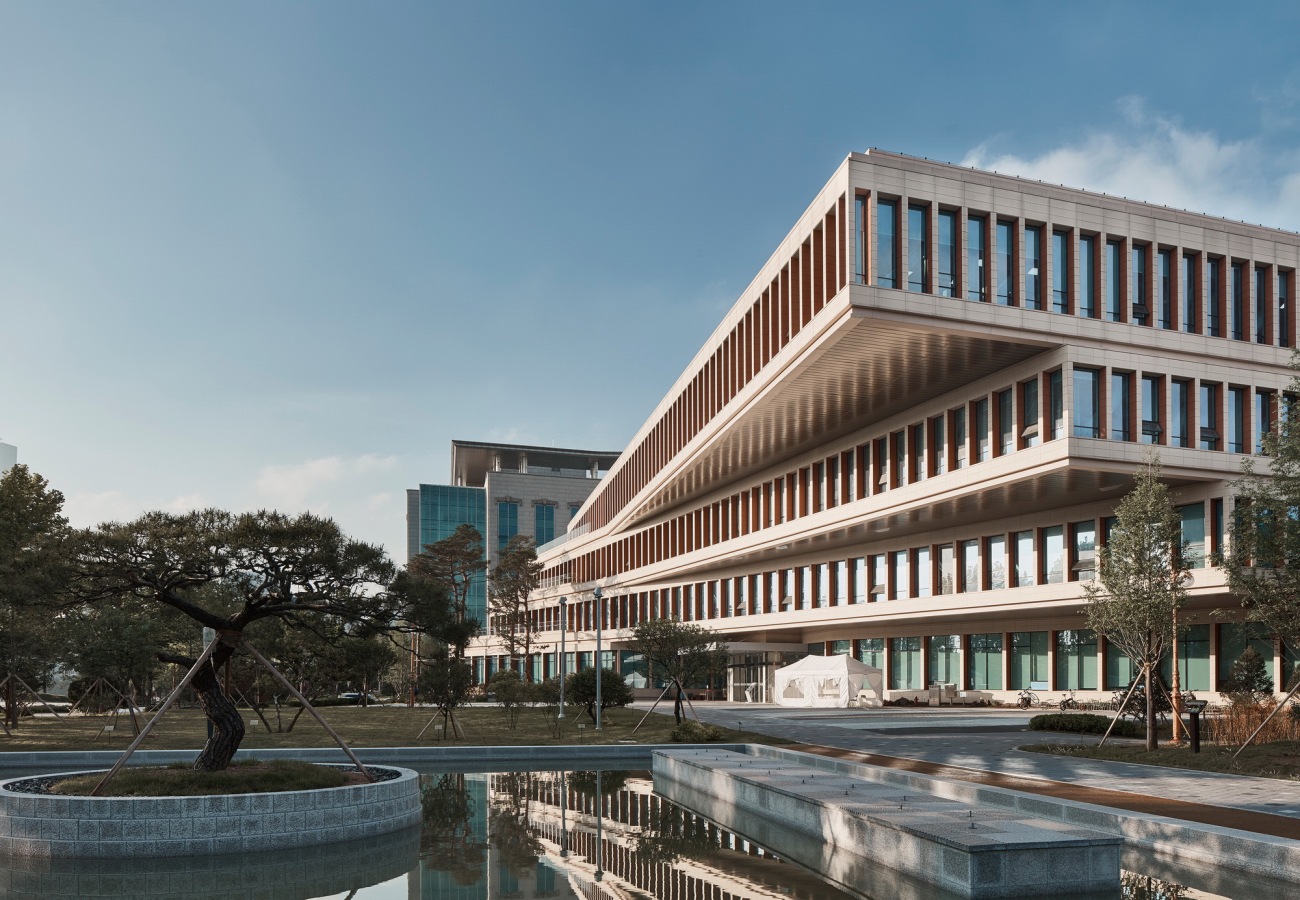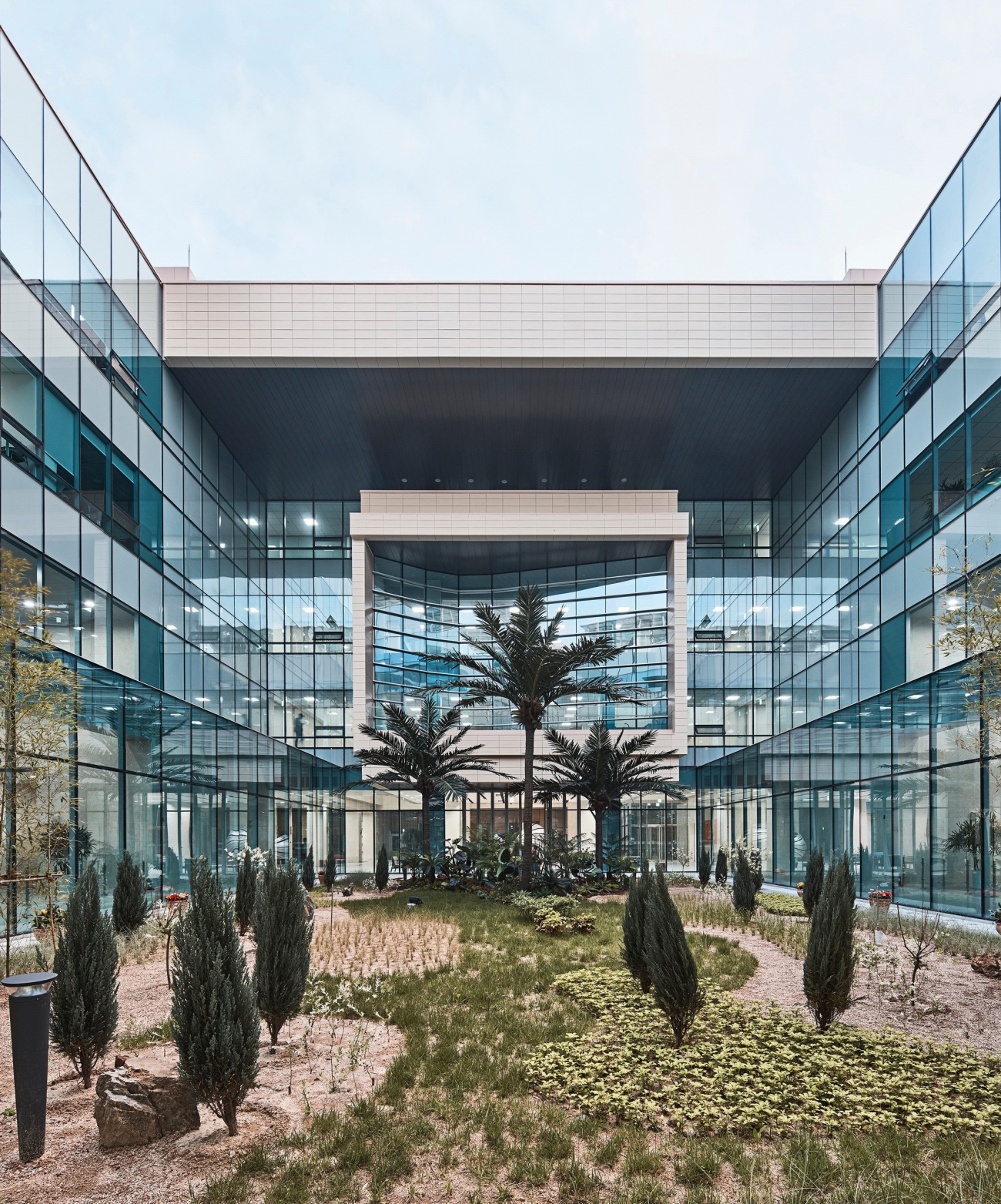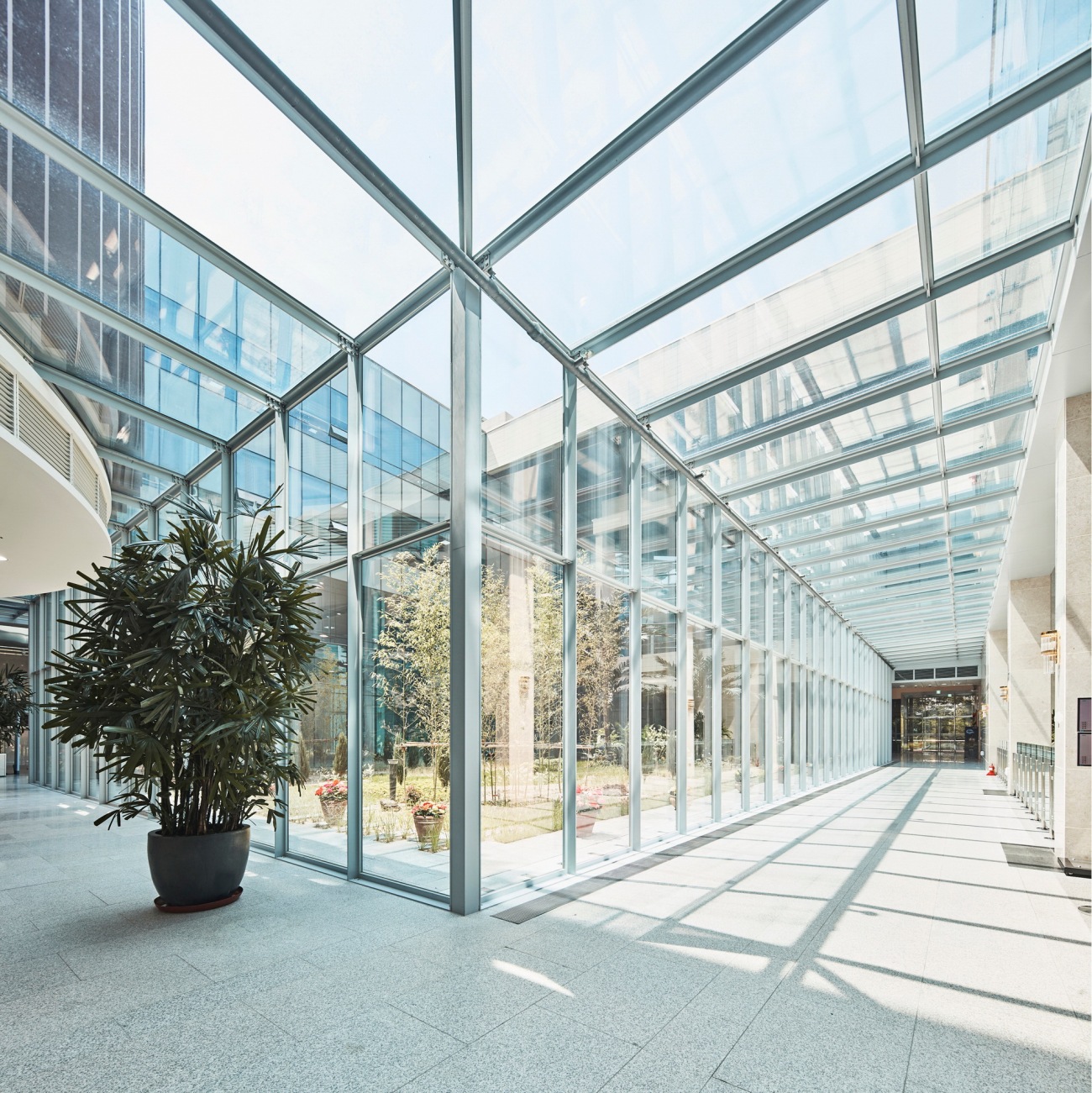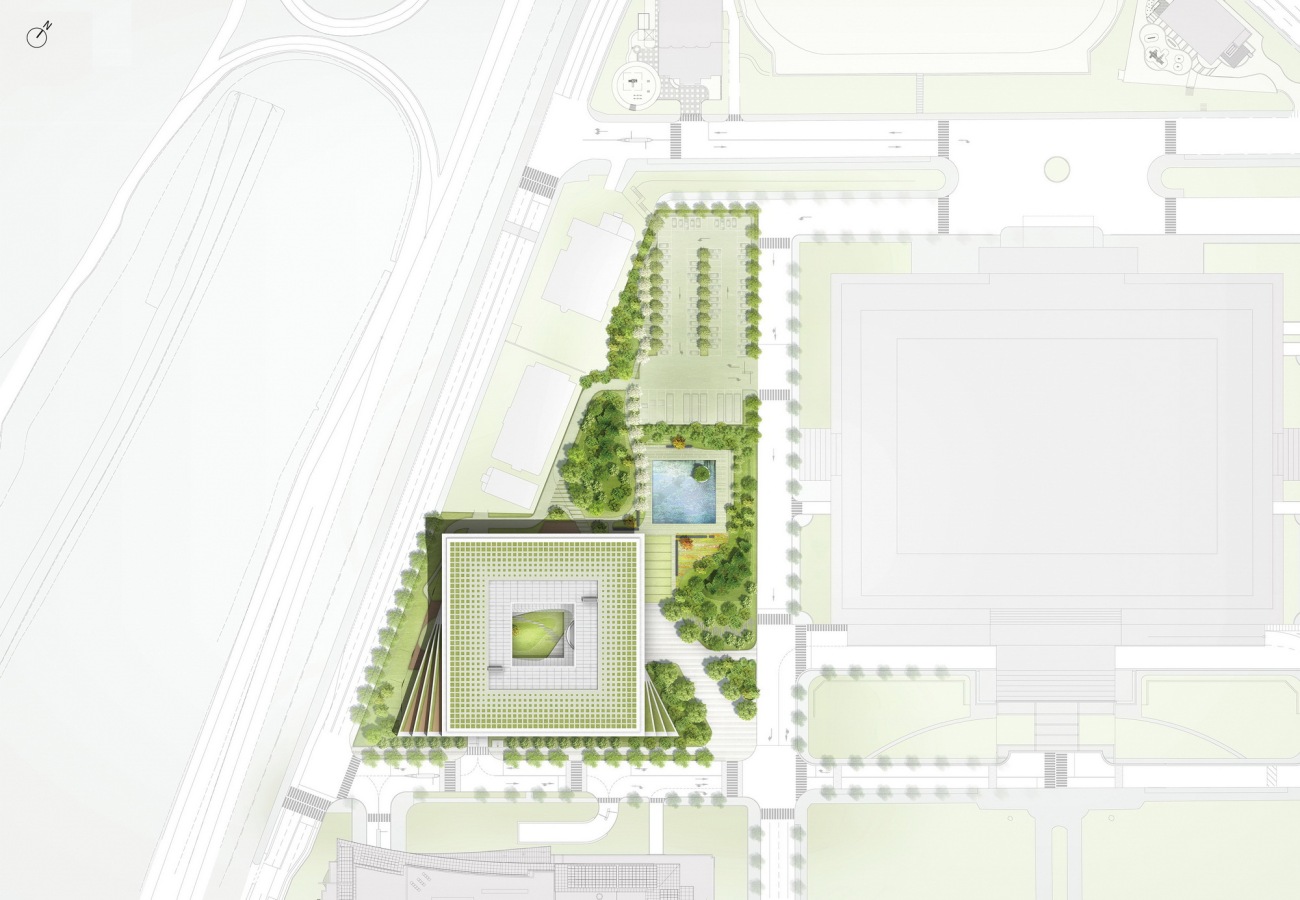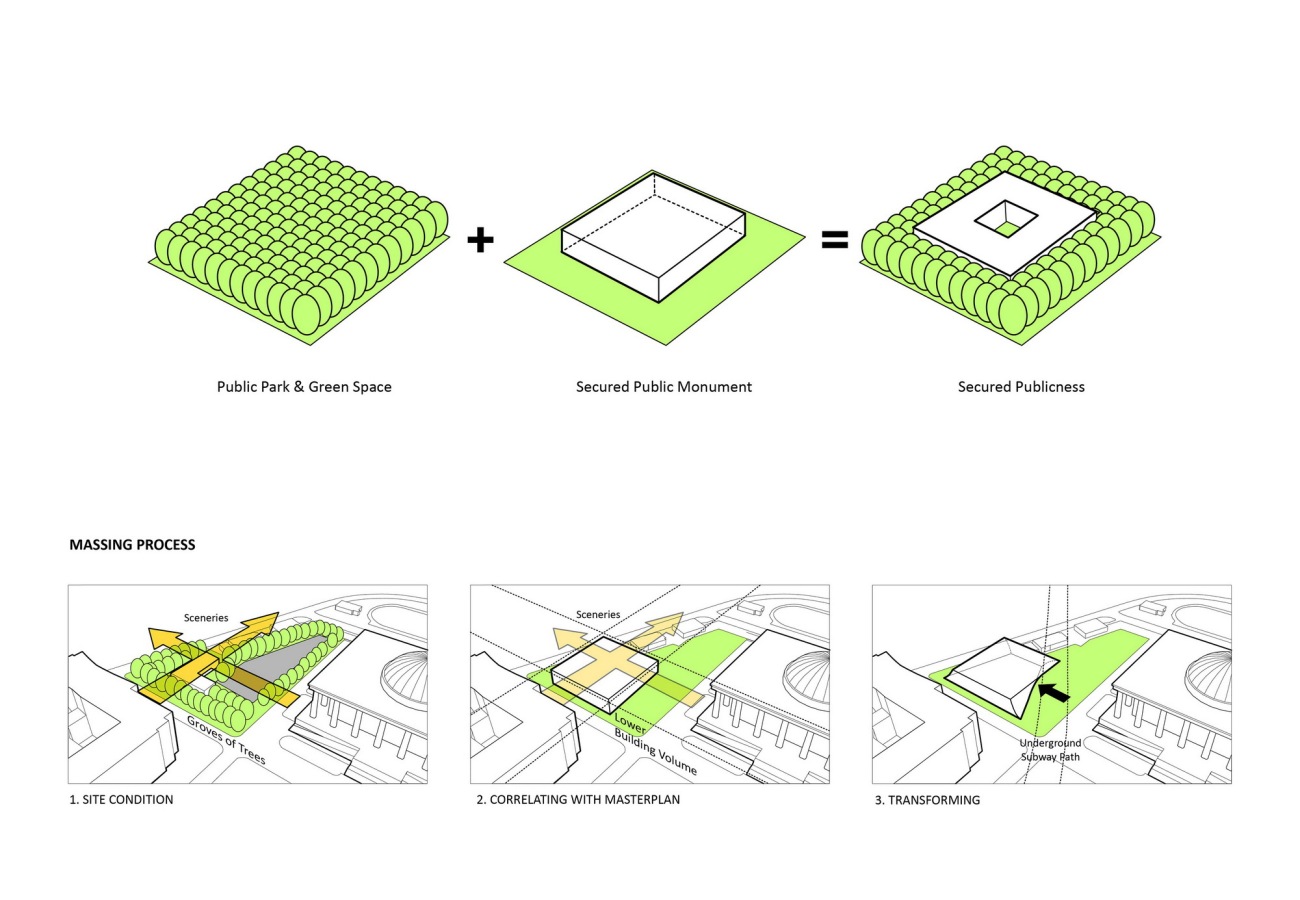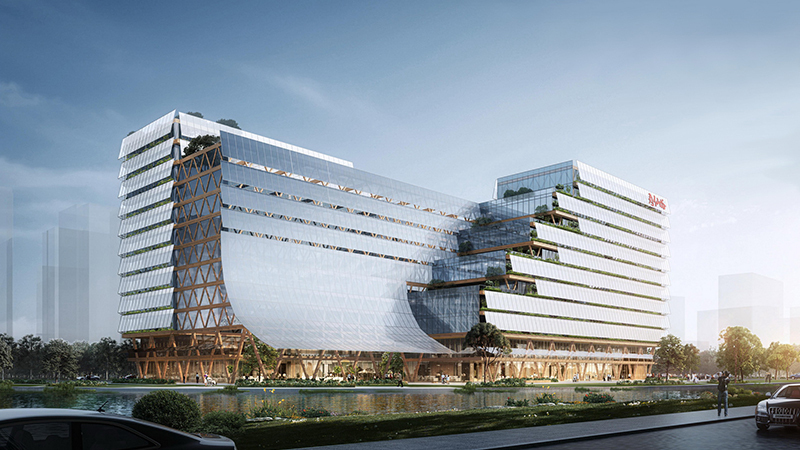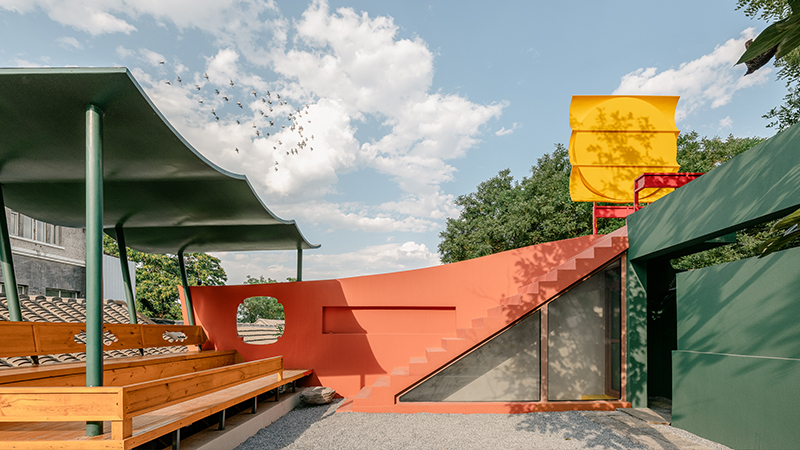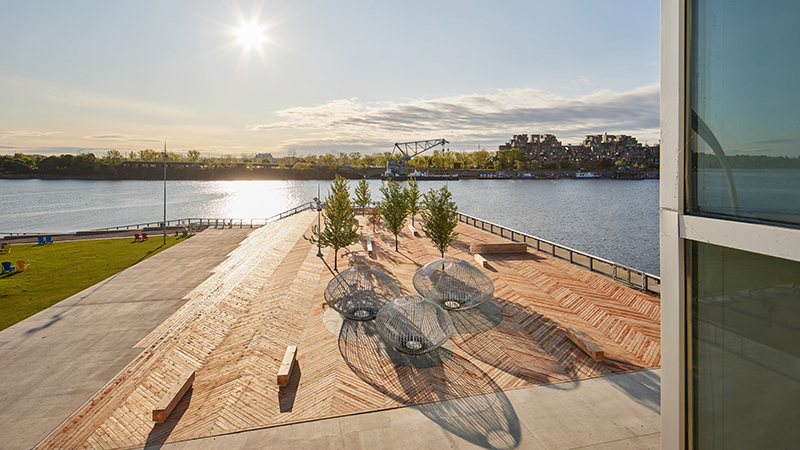| 公司: | Haeahn Architecture | H Architecture | 类型: | 建筑 |
|---|---|---|---|
| 地区: | 韩国 | 标签: | 办公空间 |
韩国公司Haeahn Architecture与总部位于纽约的H Architecture合作,最近因其位于韩国首尔的国民议会通讯大楼项目获得了2023年 Architizer A+Awards大众选择奖政府和市政建筑类别的获奖者。
South Korean firm Haeahn Architecture, in collaboration with New York based H Architecture, were recently named winners of a 2023 Architizer A+Awards Popular Choice prize in the Government & Civic Buildings category for their National Assembly Communication Building project in Seoul, South Korea.
国民议会通讯大楼位于被称为韩国民主摇篮的国民议会建筑群内,被规划为反映多元化意识形态的开放空间,同时拥抱建筑群现有组成部分的秩序。
The National Assembly Communication Building, located inside the National Assembly complex, known as the cradle of Korean democracy, was planned as an open space reflecting a pluralistic ideology, while embracing the order of existing components of the complex.
灵活的公共空间
A flexible space for public purpose
满足建筑物作为多个用户群体的场所的用途,国民议会通讯大楼不仅需要系统的安全系统,还需要空间的灵活性和可扩展性。因此,该公司开始计划建造“一座包含开放空间的灵活建筑”,除了国民议会区的正式纪念性质之外,公共日常生活也会自然地在其中进行。
To address the building's purpose as a place for multiple user groups, the National Assembly Communication Building required not only systematic security systems, but also spatial flexibility and expandability. The firm therefore embarked on a plan to build “a flexible building containing open places”, where public daily life would naturally occur, in addition to the formal monumental nature of the National Assembly area.
实施向灵活区域开放的绿色空间
Implementing a green space open to a flexible area
项目场地是一片绿地,周围树木茂盛,平均高度约为10-12米。为了反映这一现状,该公司建立了一个公共绿地,旨在通过确保高度不超过四层,使这座建筑在人性化的尺度上变得熟悉和足够低。结果是建筑仍然掩埋在绿树之中,屋顶也被创造成一个绿色区域来连接自然的流动。留下了曾经被用作绿化带的森林痕迹,以及与国会大厦本身历史一样悠久的榉树。通过这样做,该公司确保国民议会地区的纪念性景观将得到很好的保护。
The project site was a green space surrounded by lush trees, approximately 10-12 meters in height on average. To reflect that status, the firm established a public green space aimed at making the building familiar and low enough, on a human scale, by ensuring that the height would not exceed four stories. The resulkt is that the building remains buried among green trees, with the rooftop also created as a green zone to connect the flow of nature. Traces of a forest, formerly used as a green belt, were left, along with Zelkova trees, which were as old as the history of the National Assembly Building itself. In doing so, the firm assured that the monumental landscape of the National Assembly area would be well conserved.
通过灵活的层次创造系统的空间
Creating a systematic space through flexible layers
考虑到建筑物多种功能和用户共存的特点,公司旨在提高空间的可用性和工作效率,同时通过水平分区分配每层功能来保持每个设施的独立性计划。围绕中庭的四个核心提供了按用户划分的交通流系统和按设施划分的安全系统。此外,通过将优化的结构模块化系统应用于集成的工作空间构成,功能空间和工作空间的构成能够根据未来空间需求的变化灵活应对。
In consideration of the characteristics of the building, where various functions and users coexist, the firm aimed to increase spatial usability and work efficiency, while maintaining the independence of each facility by distributing functions per floor through a horizontal zoning plan. The four cores surrounding the atrium provide a traffic flow system by user, and a security system by facility. In addition, by applying an optimized structural modular system to the integrated workspace composition, functional space and workspace was composed to respond flexibly in accordance with the changing demand for space in the future.
用灵活的缝隙创造一个交流空间
Making a space of communication with flexible crevices
建筑师们密切关注该建筑对多元民主的体现,以及它对公众、新闻、议会政治和行政的多种功能的支持。据此,他们创造了一个以“相遇与交流”为主题的空间身份,确保用户群体通过相互合作与对话支持健全的民主和国家愿景。建筑内设计了各种相遇和交流的空间,并在各个功能空间之间设立了公共空间和休息区,以不断连接建筑的室内外。这些空间被设计为放松和分享的场所,促进人与人之间、空间之间以及自然与城市环境之间的交流。
The architects paid close attention to the building's representation of pluralistic democracy, and its embrace of multiple functions for the public, press, parliamentary politics, and administration. Accordingly, they created a spatial identity under the theme of “Encounter and Communicate”, ensuring that user groups would support sound democracy and the national vision through mutual cooperation and dialogue. Various spaces were designed for encounters and communication in the building, and common spaces and rest areas were established between each functional space in order to continuously connect the building, both indoors and outdoors. Such spaces were designed as places of relaxation and sharing, enabling communication between people, between the spaces, and between nature and its urban surroundings. The result is that the new National Assembly Communication Building is an open space where lively communication will take place for many years to come.
▽平面图,plan.
▽分析图,analysis.
Location: Seoul, South Korea
Program: Public Office, Community Facilities, Briefing Room, Broadcast Facility, Welfare Facility, Restaurant, Retails, Landscape Gardens
Gross Area: 23,754 m²
Completion Year: 2020
Client: The National Assembly of the Republic of Korea, National Assembly Secretariat
Architects: Taeman Kim, Jaejun Ryu
Design Team: Hyunhwa Jung, Hyeonseok Oh, Seongho An, Hyeongwook Doh, Junyong Kim, Minkang Shin, Youngjun Shin, Jaewon Chang, Yohan Bahc, Jinyoung Bae, Haengsook Lee, Yongjae Choi, Seungyoung Nam, Jongjin Park, Minjung Kim (Haeahn)
Changhak Choi, Minbum Koo, Jaesung Jung, Euimi Si (H)
Photographer: Namsun Lee
更新日期:2023-07-05 15:25:18
非常感谢 Haeahn Architecture 与 H Architecture 带来的精彩项目, 查阅更多Appreciations towards Haeahn Architecture and H Architecture for sharing wonderful work on hhlloo. Click to see more works!

